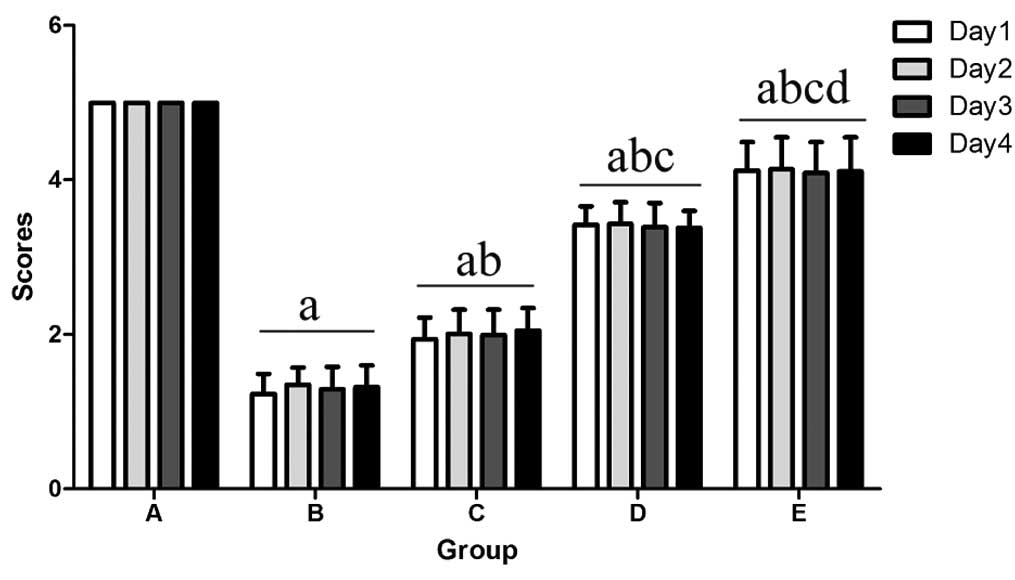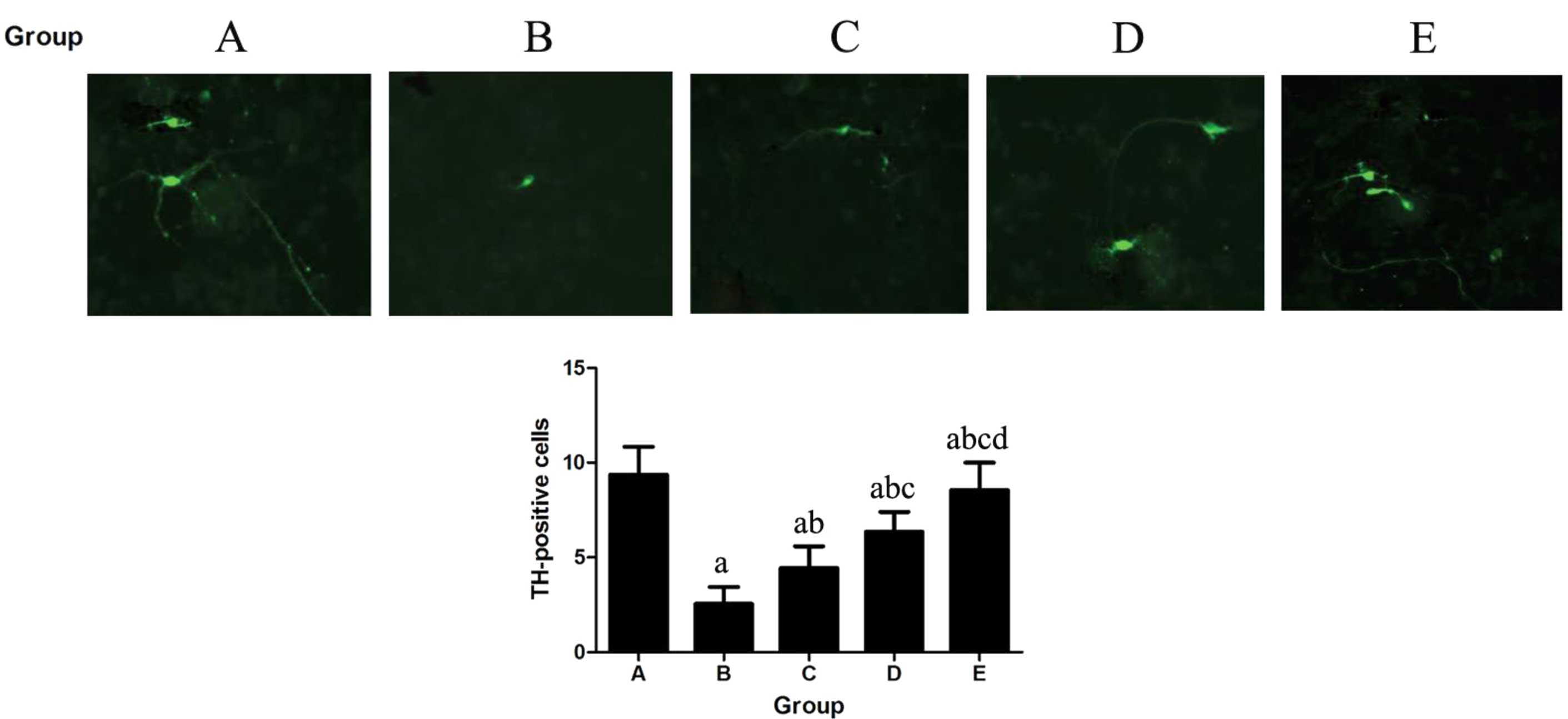Neuroprotective effect of matrine on MPTP-induced Parkinson's disease and on Nrf2 expression
- Authors:
- Published online on: November 14, 2016 https://doi.org/10.3892/ol.2016.5383
- Pages: 296-300
Metrics: Total
Views: 0 (Spandidos Publications: | PMC Statistics: )
Total PDF Downloads: 0 (Spandidos Publications: | PMC Statistics: )
Abstract
The incidence rate of Parkinson's disease (PD) is ≤2% in Chinese individuals >65 years old, accounting for 40% of the global total of PD patients. The pathogenesis of PD is not yet clear, and oxidative stress-induced mitochondrial dysfunction is considered to be the main reason for the onset of PD. Studies have shown that matrine exhibits good antioxidant activity. Thus, the present study aimed to observe the protective effect and mechanism of matrine on 1-methyl-4-phenyl-1,2,3,6-tetrahydropyridine (MPTP)-induced dopaminergic neuron damage. A total of 25 C57BL male mice were randomly divided into 5 groups, consisting of the control group (group A), the MPTP group (group B) and three matrine (4, 8 and 16 mg/kg) plus MPTP treatment groups (groups C, D and E, respectively). Results from a pole‑climbing test and locomotor activity experiments were recorded. The mice were sacrificed 4 days later and brain dissection was performed. The levels of superoxide dismutase (SOD) and glutathione (GSH) were assessed. The expression level of tyrosine hydroxylase (TH) in the ventral midbrain was studied by immunofluorescence analysis. The expression level of nuclear factor erythroid 2-related factor 2 (Nrf2) in the ventral midbrain was studied by western blot analysis. The experiments were repeated three times. Compared with control mice, the PD mice exhibited the typical behaviors associated with PD; matrine can alleviate this phenomenon, and with increasing matrine concentration, the symptoms were reduced significantly. Compared with the control mice, the PD mice had lower SOD and GSH activity, and matrine partially reversed the change in SOD and GSH activity. Immunofluorescence analysis showed that the level of TH in the ventral midbrain decreased significantly in the PD mice, and that the mice administered matrine showed higher expression of TH and levels of TH‑positive cells. Western blotting results showed that the expression of Nrf2 in the ventral midbrain decreased significantly in the PD mice, and that matrine was able to reverse this phenomenon. In conclusion, by promoting antioxidant-related Nrf2 signaling pathways in the ventral midbrain, matrine can inhibit the oxidative damage of dopamine neurons in PD.














